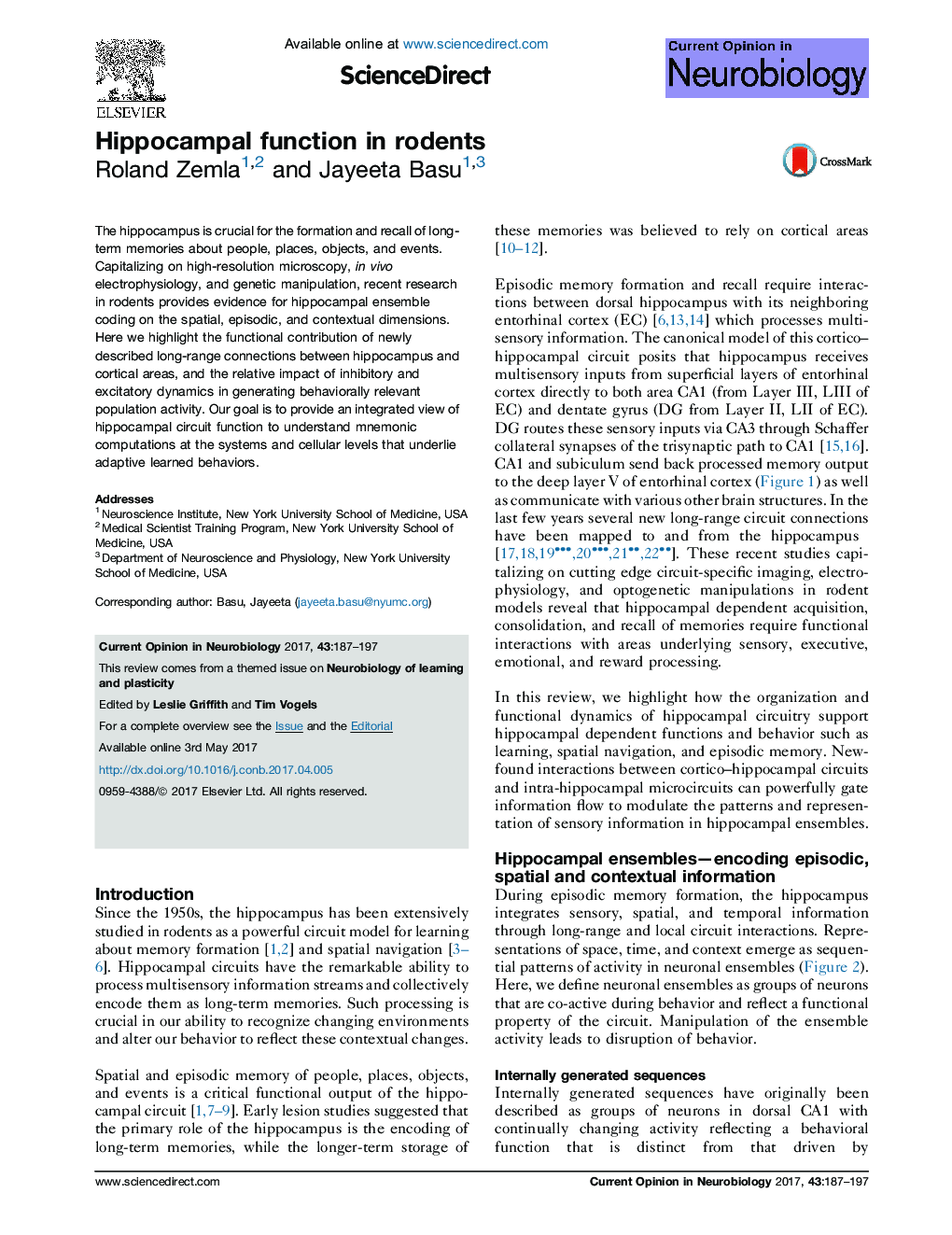| کد مقاله | کد نشریه | سال انتشار | مقاله انگلیسی | نسخه تمام متن |
|---|---|---|---|---|
| 6266031 | 1614506 | 2017 | 11 صفحه PDF | دانلود رایگان |
- Hippocampal ensemble activity conveys information about the spatial, episodic, and contextual dimensions of a sensory experience.
- Hippocampus represents episodic information through internally generated sequences.
- Selective reactivation of sparse neuronal ensembles in hippocampus by cortical excitatory projections is sufficient for memory recall.
- Long-range cortical-hippocampal inhibition modulates object and context-dependent memory by gating dendritic spikes and plasticity.
- Dendritic spikes mediate spatial feature selectivity in the hippocampus to help generate place cells.
The hippocampus is crucial for the formation and recall of long-term memories about people, places, objects, and events. Capitalizing on high-resolution microscopy, in vivo electrophysiology, and genetic manipulation, recent research in rodents provides evidence for hippocampal ensemble coding on the spatial, episodic, and contextual dimensions. Here we highlight the functional contribution of newly described long-range connections between hippocampus and cortical areas, and the relative impact of inhibitory and excitatory dynamics in generating behaviorally relevant population activity. Our goal is to provide an integrated view of hippocampal circuit function to understand mnemonic computations at the systems and cellular levels that underlie adaptive learned behaviors.
Journal: Current Opinion in Neurobiology - Volume 43, April 2017, Pages 187-197
